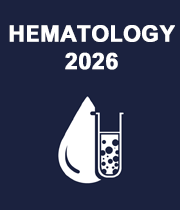Title : Covid-19 microthrombosis in vivo assessed by conjunctival video capillaroscopy
Abstract:
Currently, more than 6.8 million deaths have been reported globally [WHO] from the COVID-19 pandemic and numerous symptoms have been observed in patients surviving COVID-19 which were described by the term “long COVID syndrome”. The injured endothelium has a primary role in the progress of the COVID-19 disease and as one of the three components of Virchow’s triad, it is the cause of extending thrombotic microangiopathy. Various microthrombotic mechanisms have been proposed, such as degradation of endothelial junctional proteins and glycocalyx, endothelial cell derived microvesicles, endothelial exocytosis, and immunothrombosis with NETs. Regardless of the endothelial mechanism, COVID-19 leads to altered microvascular hemodynamics and extensive microthrombosis and that was the reason clinical doctors proposed antithrombotic strategies.
The purpose of recent work was to quantify the hemodynamic and thrombotic effect of COVID-19 on the eye microcirculation of patients with thromboprophylaxis, shortly after hospital discharge. Microvessels were identified and classified as “capillaries” (CAP), “postcapillary venules of size 1” (PC1), and “postcapillary venules of size 2” (PC2). The results demonstrated that COVID-19 not only reduces significantly axial blood velocity in the exchange microvessels of the eye but has also a devastating effect on microthrombosis despite thromboprophylaxis treatment. This gives a possible explanation for long COVID syndrome and a hint about the existence of a possibly unknown coagulation factor.
The antithrombotic strategy for COVID-19 disease patients is still a matter of debate and this presentation will discuss the latest COVID-19 related microthrombotic and microfluidic in vivo data, mainly from imaging techniques.
Audience Takeaway:
- The audience will be informed on in vivo imaging quantification techniques of microvascular hemodynamics and thrombosis
- The audience will learn the latest research results on COVID-19 in vivo microthrombosis quantification
- There will be some discussion on thromboprophylaxis and related mechanisms
- There will be an appreciation that this is multidisciplinary research involving hemorheology, bio-optics, imaging, blood coagulation, and medication.



